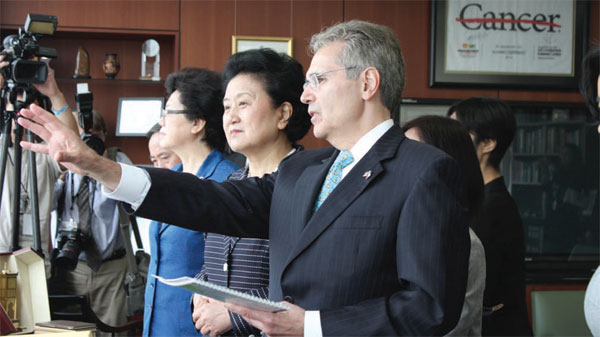Chinese spur medical-tourism growth in the US
Updated: 2015-08-07 11:18
By Chang Jun(China Daily USA)
|
||||||||
More and more affluent Chinese are coming to the United States for treatment of life-threatening diseases due to
ineffective or inaccessible medical services at home, Chang Jun reports from San Francisco.
"How can a daughter give up her mom?"
That was what Diana Liu, a Silicon Valley-based businesswoman, asked herself when doctors in China said her 70-year-old mother had three months to live after being diagnosed with advanced-stage small-cell lung cancer (SCLC). SCLC is the leading cause of cancer deaths in women and men in China, with the average five-year survival rate around 15 percent.
Liu had returned to her hometown in Guizhou province in February last year during the Chinese Spring Festival when she got the news about her mother. "Doctors told us the disease is incurable, and the best option for my mom was to relax until death would claim her life within three months," said Liu. "But, how can a daughter give up her mom?" Liu didn't.
With a faint gleam of hope, she submitted an expedited US visa application for her mother, and within two weeks she was admitted to the cancer center at Stanford University in San Francisco. After a series of check-ups including oncogene detection, doctors assured Liu that chances were good for her mother's survival.
Liu's mother was put into inpatient care and treated with a combination of chemotherapy and radiation therapy. "They (doctors) hold my mom's hands, soothing her and cheering her up," said Liu. "Assistance seems always within reach. They even include several Chinese-speaking nurses on the team."
Her mother has been discharged from the hospital and returns for regular primary care every two weeks. She is in stable condition and will stay in the US and won't travel unless she passes a five-year survival assessment.
The cost
The bill was $60,000 and is expected to go higher, and Liu says, "My mom would have had passed away without seeking medical services here."
Liu is a strong advocate for what has become known as medical tourism, patients traveling outside their country of residence to receive alternative medical care and services, especially in the United States. "My experience is the best testimonial," Liu said of seeking medical assistance for her mother abroad.
A McKinsey & Co report estimates that the global medical tourism market has been growing by 20 percent a year. In 2000, it was valued at less than $10 billion and last year it was almost 10 times that.
About 60,000 Chinese have gone abroad every year to seek medical services in recent years, says the Shanghai Medical Tourism Products and Promotion Platform. There are no definitive numbers on how many people from China seek medical help in the US, but healthcare authorities say the number has increased because there are more wealthy people - usually private business owners from second- or third-tier cities - who can afford treatment and, most of all, because they are unhappy with the quality of healthcare services in their country.
Medical agencies
Many of those needing treatment in the US and elsewhere turn to medical agencies to find the right hospital and set up appointments. An agent can charge several thousand dollars to connect the patient with a clinic.
Saint Lucia is a Beijing-based agency that specializes in arranging overseas medical care.
Cai Qiang developed his business by connecting the new rich in China with advanced technologies and medical services in the US. "The discrepancy between limited medical resources in China and sufficient financial strength of China's new rich will generate numerous opportunities for American medical facilities."
Patients with life-threatening diseases, such as lung and breast cancer and melanoma, make up 80 percent of his company's clients, said Cai, adding that the average treatment trip from China to the US costs $100,000 to $150,000 in medical bills, and in some cases could be high as $700,000.
Cai's company recently received an investment from Sequoia Capital China, and in May the Mayo Clinic in Rochester, Minnesota, signed an agreement with Saint Lucia to receive Chinese patients through the company.
The Mayo Clinic said the number of its patients from China has more than doubled over the past year. It now has a Web page in Chinese and has put interpreters on staff. "China, probably of all countries, is the one where we see the greatest growth right now," said Mikel Prieto, the medical director of the Mayo Clinic's international office. He declined to provide specific figures.
US contracts
Cai said his company also has contracts in the US with Partners HealthCare, the largest network of hospitals affiliated with Harvard Medical School, including Massachusetts General Hospital, Brigham and Women's Hospital, Dana Farber Cancer Institute, McLean Hospital and Spaulding Rehabilitation Hospital.
In response to a public outcry over a decline in the scope and quality of healthcare services, since 2008 China has tackled transforming its troubled healthcare system, which suffers from chronic government underfunding, inequalities between urban and rural areas and overpriced, low-quality medical products and services.
According to the finance ministry, in 2014 China spent $133 billion, or about 6 percent of national fiscal spending, on healthcare. But national funding falls far short of what is needed for an aging population that is increasingly plagued by chronic diseases, including cancer, heart disease and diabetes. And McKinsey forecasts healthcare spending in China will reach approximately $1 trillion by 2020.
So far, the healthcare reform has roughly achieved the government's goals and the world's most-populous country will likely reach its medical reform targets by 2020.
According to a World Bank report, Chinese people are willing to spend more to get better medical services and treatment. However, high-end quality medical care remains the exception throughout the country, and is obtainable only by the privileged few.
China's hospitals
Under a complicated rating system which takes into consideration doctors' academic credentials and experience, as well as equipment and facilities, there are about 1,000 hospitals in China classified as top-ranked. The rating, however, is not equivalent to good treatment.
Public hospitals face challenges in providing care to those who need it, and are overwhelmed with demand.
Jiang Shuqing, chief physician at the Beijing Obstetrics and Gynecology Hospital, said she usually spends only five minutes on each outpatient case. "It would be nice to talk longer and examine further," said Jiang. However, she said with 50 people waiting outside her office, the each day is a battle.
With a reputable history of 50 years and about 660 beds, Jiang said her hospital struggles to treat patients. "It's a common sight in our hospital that people form long lines in the early morning, sometimes from midnight, to make sure they secure an appointment," she said. "Many of them are traveling from afar and are non-Beijing residents."
Limited medical facilities and resources have caused inadequate and overly expensive medical services, said Jiang, adding that the problem sometimes triggers disputes between doctors, hospitals and patients.
If big medical bills do not give the desired outcome, some patients or a member of their family resort to violence over perceived mistreatment by doctors. Chinese hospitals report an average of 27 attacks a year per hospital, according to a 2013 survey conducted by the Chinese Hospital Management Association. The survey indicated that violence against medical personnel rose by 23 percent on average each year between 2002 and 2012.
Chinese hospitals struggle to be financially independent and often operate like profit-seeking entities. Relatively underpaid doctors seek extra monetary gains by ordering unnecessary drug prescriptions and sophisticated diagnostic tests and treatment, which can lead to exploitation of patients.
Some medical procedures are not completely for the benefit of patients, but are conducted for economic reasons, said John Cai, director of the Centre for Health Care Management and Policy at the China-Europe International Business School in Shanghai. "A system that emphasizes serving the patients is not yet established," he said in an interview with the Wall Street Journal.
Skill gap
Lv Gang, a neurosurgical expert at the Beijing Tiantan Hospital, said the technology and medical skill gap between Chinese and US hospitals is remarkable.
Tiantan Hospital is a major comprehensive Grade III-A General Hospital, the highest level on the rating list based on the national healthcare system standard. But it lags behind in areas such as research on molecular mechanisms of helicobacter pylori-induced gastric cancer and molecular targeted therapy.
"For some of the malignant tumors, we doctors simply know too little to determine a definite diagnosis," said Lv. "Not to mention effective treatment."
Many Chinese patients suffer from misdiagnosis and most of them could have been treated accurately if they had received an accurate diagnosis, said Lv.
In February, the San Francisco-based medical consultancy provider MORE Health Inc received a case from Fujian province. Alex Zhang, in his 40s, suffered from progressive right limb weakness, chronic indigestion, trouble in swallowing and persistent pain. Undergoing lengthy treatment on presumed multiple sclerosis in local hospitals and seeing no improvement, Zhang decided to explore overseas medical treatment.
"We translated Zhang's case records, and submitted his history to our contracted partners in three days," said Hope Lewis, founder and chairwoman of MORE Health. "Two days after, we helped the patient secure appointments with Robert Knowlton and Mark Strassberg, both clinical neurology experts at the hospital affiliated with the University of California, San Francisco."
Knowlton diagnosed Zhang's disease as progressive multifocal leukoencephalopathy, a type of kind of leukodystrophy, which Zhang might have inherited from his family.
"The American doctors revoked Zhang's original diagnosis from China, wrote him a new prescription and formulated a treatment plan targeting his symptoms," said Lewis. "We were thrilled to see all these measures taking effect just within one week and now Zhang functions well."
Liu's visit
During her June 22 visit to the University of Texas MD Anderson Cancer Center in Houston, Vice-Premier Liu Yandong said China will continue to work closely with the US and deepen cooperation in medical research and practices to curb cancer and other diseases.
After listening to an introduction by Ronald A. DePinho, president of the world-renowned cancer research and treatment institution, Liu reiterated the Chinese government's resolve to reform its medical and healthcare system, and shared her concerns about the rising number of cancer patients in China, and the prevention, early detection and treatment for the patients.
There are about 3.4 million Chinese diagnosed with cancer each year, of which about 2.1 million will not survive. The five-year survival rate of cancer patients in China is only about 30 percent, much lower than that at the Anderson Center, Liu said at the meeting.
"We have to work with the United States and Anderson Center to learn from the advanced science and technology, particularly in our nation's fight against cancer, concerning early diagnosis and detection, precision treatment and early prevention," said Liu, who at the same national conference in April said that medical reform in China was at a difficult and crucial stage.
There are a large number of academic medical centers in the US conducting cutting-edge clinical research in all areas of clinical medicine and historically the largest number of advances in medical and surgical care, particularly in oncology, have been developed at US medical institutions, said Robert Warren, chief of surgical oncology at the University of California, San Francisco (UCSF).
The patient population of Chinese coming from China has grown by more than 25 percent in each of the past few years, said the medical center at UCSF.
As for cancer treatment and care, Warren said since UCSF, UCLA and Stanford universities all have been designated Comprehensive Cancer Centers by the National Cancer Institute. These institutions excel in clinical care of patients with cancer, basic and clinical research in oncology and population-based research.
Xiaodong Jiang is the China head of global venture capital firm New Enterprise Associates (NEA), which has been an active healthcare investor for more than 35 years and has invested in more than 80 healthcare companies that have gone public. He said NEA was investing in companies enabling cross-border clinical and research collaboration between the US and China, such as MORE Health.
For Chinese patients who have the money and want to seek a second opinion, a treatment plan or actual treatment abroad, there are several hurdles that can keep them from doing so.
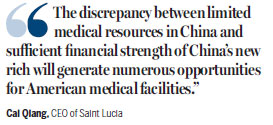
In China, public hospitals are not required by law to provide medical records in languages other than Chinese. "Many patients just do not have bilingual medical records," said Lewis.
The majority of the Chinese patients also remain ignorant of the US medical system, facilities, medicines and practitioners. "Like a blind person, I don't know any American doctors and hospitals and have no idea what I should do first," said Zhang, recalling how getting connected with MORE Health six months ago helped sort things out.
Through MORE Health, patients are able to obtain bilingual medical records first, followed by an alternative co-diagnosis from both US and Chinese doctors, and finally a recommended treatment plan from top physicians on the experts' team in the US.
"Our services are not just for the deep-pocketed," said Jiang. Our global co-diagnosis is priced for middle-, upper-middle, and affluent-class Chinese who are suffering from life-threatening and chronic medical conditions," said Lewis.
The startup currently handles 20 to 30 cases from China each month and expects business will boom as they step up marketing efforts in China.
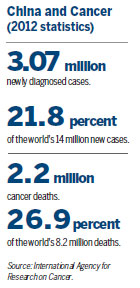
The quality of care offered by medical tourism companies can be as variable as the quality of care available in the US, Xiaodong noted, adding that a US physician is only required to be minimally competent under the law.
Gang said he is very careful when referring patients to the US for further treatment.
"Any responsible doctor needs to prioritize the well-being of his patient among other factors," he said, adding that he would examine the background of the US partners, including the agency specializing in medical tourism and American doctors and hospitals.
Reasonable expectations
Meanwhile, "patients themselves need to set reasonable expectations from their medical tourism trip," said Lv. "There is no such thing as a 'guaranteed cure'."
On the surge in medical tourism and increasing number of agencies, Lewis cautioned consumers to question the qualifications of a medical team proposed by an agency, and an agency's professionalism. "For example, can they prepare impeccable business documents in English?"
A practicing attorney specializing in international corporate law, Lewis said specialty practices of MORE Health physicians include oncology, neurology, cardiology and pediatrics.
For MD Anderson Cancer Center, it now has a webpage in Chinese and has put Chinese-speaking personnel on staff, directing patients in each step of their hospital visit or stay from making an appointment to paying the bill.
"I'm so grateful to my mother's American medical team," said Diana Liu. "The treatment is so effective. I can't believe I still have my mom."
Contact the writer at junechang@chinadailyusa.com
|
Chinese Vice-Premier Liu Yandong visits the offi ce of Ronald A. DePinho, president of the University of Texas MD Anderson Cancer Center on June 21 in Houston. She vowed to deepen existing cooperation in medical research and practice between Anderson and China to curb cancer and other diseases in China. Chang Jun / China Daily |
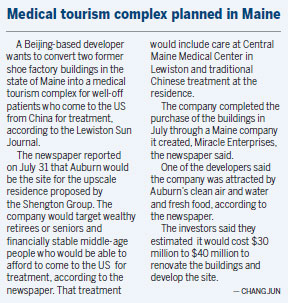
(China Daily USA 08/07/2015 page20)

 30 historic and cultural neighborhoods to visit in China
30 historic and cultural neighborhoods to visit in China
 Beijing Museum of Natural History unveils 'Night at the Museum'
Beijing Museum of Natural History unveils 'Night at the Museum'
 Sun Yang wins third consecutive 800m free gold at worlds
Sun Yang wins third consecutive 800m free gold at worlds
 Aerial escape
Aerial escape
 Freshmen of top universities from poorer families work part time to reduce family burden
Freshmen of top universities from poorer families work part time to reduce family burden
 17 armed forces take part in Russia military contest
17 armed forces take part in Russia military contest
 A glimpse of traditional Chinese business blocks
A glimpse of traditional Chinese business blocks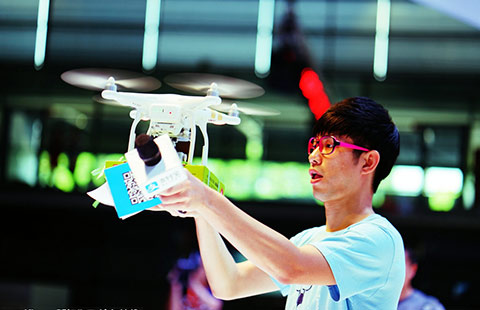
 Top 5 most popular drones in China
Top 5 most popular drones in China
Most Viewed
Editor's Picks

|

|

|

|

|

|
Today's Top News
China willing to work with US to contribute to world peace, stability
China asks further investigation on MH370
Police fatally shoot ax-wielding man at Nashville movie theater
Study-abroad tours in US booming
Malaysia confirms plane debris is from Flight MH370
IMF to study yuan inclusion
LA clinic seeks fertility-market access
China and US discuss ways to fight terror
US Weekly

|

|
